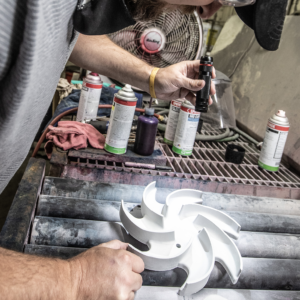Liquid Penetrant Inspection

How Does Liquid Penetrant Testing Work?
Liquid penetrant inspection or liquid penetrant testing is a sensitive, nondestructive surface inspection method for detecting minute discontinuities (cracks, porosity, holes, or surface seams) in non-magnetic materials where magnetic particle inspection cannot be used. For this method of testing, a liquid with high penetrating qualities is applied to the part surface and is drawn into extremely small surface openings by capillary action. The excess liquid is removed, and a developer such as talcum powder is applied to the surface. The penetrant trapped in discontinuities flows back up to color the developer and provide an indication.
In dye penetrant testing, the liquid penetrant is colored with a visible dye, and the surface is inspected under normal white light. But when fluorescent penetrant dye, the surface must be inspected under fluorescent light in order to properly view any quality issues.
Information on liquid penetrant testing is contained in the following specifications:
- ASTM E165
- ASTM E433
- ASTM E1135
- ASTM E1208
- ASTM E1209
- ASTM E1210
- ASTM E1219
- ASTM E1220
- ASTM E1417
- ASTM E1418

